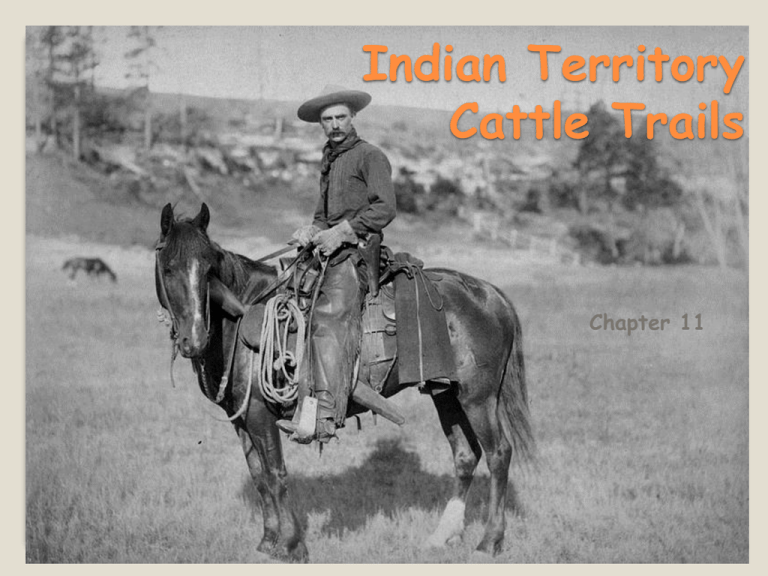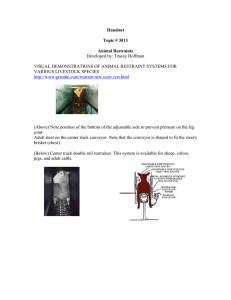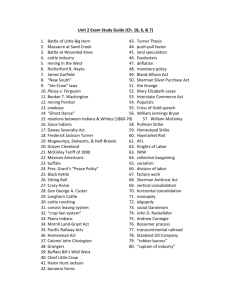Indian Territory Cattle Trails
advertisement

Indian Territory Cattle Trails Chapter 11 Transport cattle from Texas to railroad station in Kansas or Missouri so that cattle could be taken by train to large cities in the northeast Purpose eastern Indian Territory (late 1860s) Major rail stop is Kansas City, MO Shawnee Trail central Indian Territory (early 1870s) Major rail stops are Abilene and Wichita, KS Chisholm Trail western Indian Territory (early 1880s) Major rail stop is Dodge City, KS Western Trail A cattle rancher could earn $50 to $200 per head when selling the cattle at the rail stations. Herds along the trails ranged from 2000 to 4000 head. Profitable Taxes placed on cattle crossing through their reservations Leasing of land for cattle to graze Goods and services sold to the cattle drovers (cowboys)—hotels, hot baths, warm meals, items in general stores, saloons, prostitutes Profitable for Indians Railroad construction further west and further south Dawes Act giving Indians individual plots of land for farming Use of barbed wire to help protect farmland End of an Era











